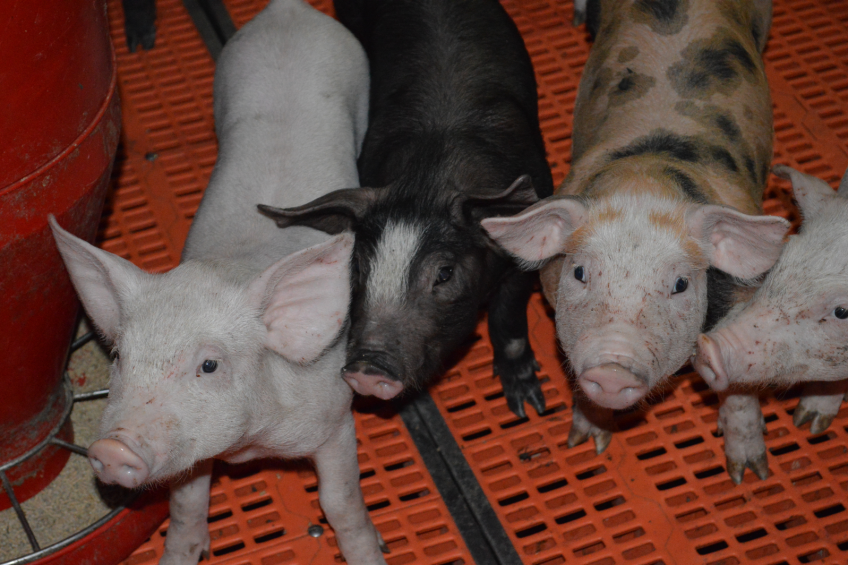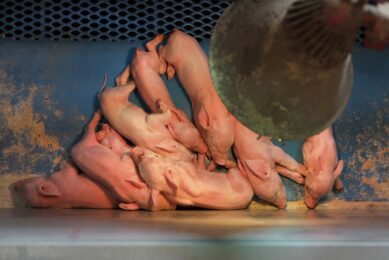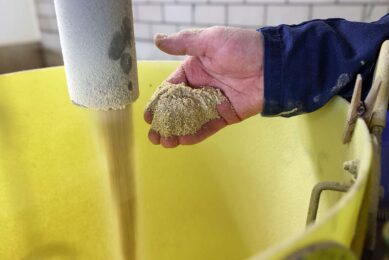Yeast to balance piglet microbiota at weaning

The pig’s intestinal microbiota, consisting of over 800 species, is part of the first line of defence against pathogens. Gut microbes are a key target in dietary interventions aimed at supporting microbial balance and stability during weaning.
By Dr Melanie Le Bon, Monogastric Centre of Excellence, Lallemand Animal Nutrition – University of Nottingham, UK
There is no doubt that weaning is one of the most stressful events in pig farming and represents a critical step which must be well managed in order to minimise production losses. In nature, weaning is a slow and gradual process, but today piglets are faced with a combination of stresses to which they must quickly adapt. It is well known that the immediate consequence of weaning is a drastic reduction in feed intake. This lack of nutrient supply has a dramatic impact on the anatomy, functions and micro-organisms of the gastro-intestinal tract which impairs efficient digestive processes and barrier functions.
The use of antibiotics has been common practice to promote growth and reduce enteric pathogens around weaning for several decades. However, the emergence of antibiotic resistance has raised public concern over the impact of antimicrobial use in agriculture and resulted in the European ban on antibiotics as a growth promoter in 2006. Altogether, it is clear that there is a strong demand for safe and environmentally sustainable alternative strategies to antibiotics to improve pig productivity and health. These include nutritional strategies and functional feed additive to improve structure, function and efficiency of the gut. This article focuses on the impact of weaning on the gut microbiota and how the use of a live yeast probiotic, Saccharomyces cerevisiae boulardii CNCM I-1079 (S.c. boulardii), can help reduce some of the detrimental changes that occur at weaning.
The importance of microbiota
The pig gastro-intestinal tract co-exists with a diverse and dense population of commensal bacteria, collectively described as the microbiota. In a healthy state, the presence of a well-balanced and stable gut microbial community is one of the most important factors to reduce disease risk. As a first line of defence, sudden disruption of microbiota balance (with broad spectrum antibiotics, for example) severely compromises gut health and can lead to overgrowth of undesirable bacteria and opportunistic pathogens.
The pig gut microbiota is composed of well over 800 bacterial species. In the past, intestinal microbiota was studied by looking at a very limited number of cultivable bacterial groups (less than 10% of the total population), and assessing gut health was primarily focused on the presence of a few pathogens. Today, with recent development in molecular sequencing technology, it is now possible to consider bacterial diversity and composition in its entirety. This is an invaluable tool which gives new insights into this rich and complex ecosystem and allows us to better understand the relationship between gut health, microbiota and nutrient utilisation.
Stabilisation of the gut microbiota by S.c. boulardii is critical to overcome some of the consequences of weaning.
Bacterial composition is greatly affected by diet and dominated by bacterial groups best adapted to available nutrients and conditions in the gut; therefore, strategic dietary modulation can significantly influence intestinal microbial composition. Withdrawal of sow’s milk, transition to new diet and mixing changes nutrient availability in the gut and exposes the weaned piglets to a wide range of new micro-organisms. As a result, we observe a distinct change in diversity and composition as well as a transient instability of the gut microbiota post weaning (Figure 1). This microbiota instability, if not controlled, can lead to overgrowth and proliferation of undesirable bacteria, resulting in poor health and performances. In a recent study, the team at the Monogastric Centre of Excellence showed that remarkable increase in faecal E. coli abundance was associated with reduced bacterial diversity and diarrhoea post-weaning.
Effect of a live yeast probiotic
Several studies have been conducted to investigate the effect of S.c. boulardii on the gut microbiota of the pig at weaning. In a first published study, it was demonstrated that successive supplementation with S.c. boulardii and P. acidilactici for nine weeks post-weaning improved feed conversion ratio and significantly reduced faecal E. coli levels.
Modulation of gut microbiota by S.c. boulardii post weaning has recently been investigated at the University of Nottingham using metagenomic analysis and has revealed distinct differences in bacterial community profiles between pigs supplemented with S.c. boulardii and controls. Piglets in the S.c. boulardii group also showed a greater proportion of Lactobacillus population. In the same trial, antibiotic treatment profoundly affected the gut microbiota of weaned piglets (as expected!), and administration of S.c. boulardii maintained and stabilised the microbiota structure during antibiotic treatment.
In a separate farm study, a small number of piglets was followed in the first two weeks post-weaning. Piglets initially started with similar weights and close microbial community structure; however one piglet showed a distinct drift in its microbial community as well as a rapid reduction in bacterial diversity. While all piglets rapidly resumed growth after a few days, this individual consistently lost weight during the whole course of the study. This typically illustrates the link between microbial balance, health and weight gain. In this trial, piglets supplemented with S.c. boulardii maintained a greater level of bacterial similarity compared to control pigs, further suggesting an homogenisation and stabilisation of the intestinal microbiota at weaning. Further evidence of this effect can be found in the literature in human and rodent studies.
The importance of a well-balanced and stable microbiota as well as the risk associated with weaning and antibiotic usage has been described above. In this context it becomes evident that stabilisation of the gut microbiota by S.c. boulardii is critical to overcome some of the negative consequences of weaning such as diarrhoea and proliferation of negative organisms.
Conclusion
It is clear that weaning causes profound changes and instability on the microbiota profile of the pig. The recent development of sequencing technologies is now able to provide a comprehensive view of the gut micro-ecosystem. Yet, many questions remain to be answered and we are just at the beginning of understanding complex interactions between intestinal microbes, gut functions and nutrition. This will allow to better design and manage feeding strategies without antibiotics in order to to manipulate the composition of the microbiota and its metabolic activities to the advantage of the piglet and protect against the challenges of weaning.
[Source: Pig Progress special – Piglet Health, 2014]
 Beheer
Beheer








 WP Admin
WP Admin  Bewerk bericht
Bewerk bericht